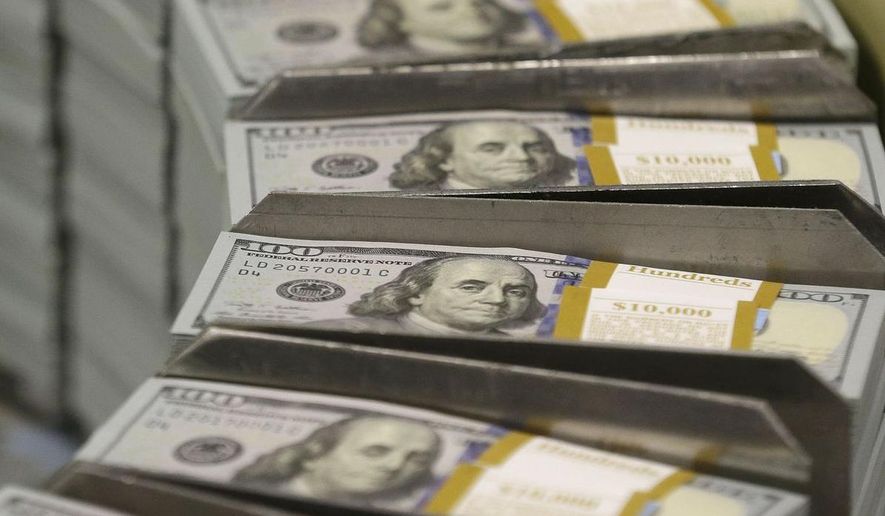The federal government took in a record tax haul in April en route to its biggest-ever monthly budget surplus, the Congressional Budget Office said, as a surging economy left Americans with more money in their paychecks — and this more to pay to Uncle Sam.
All told the government collected $515 billion and spent $297 billion, for a total monthly surplus of $218 billion. That swamped the previous monthly record of $190 billion, set in 2001.
CBO analysts were surprised by the surplus, which was some $40 billion more than they’d guessed at less than a month ago.
Analysts said they’ll have a better idea of what’s behind the surge as more information rolls in, but for now said it looks like individual taxpayers are paying more because they have higher incomes.
“Those payments were mostly related to economic activity in 2017 and may reflect stronger-than-expected income growth in that year,” the analysts said in their monthly budget review. “Part of the strength in receipts also may reflect larger-than-anticipated payments for economic activity in 2018. The reasons for the added revenues will be better understood as more detailed information becomes available later this year.”
Official numbers are due out from the Treasury Department in a few days, but the CBO is usually accurate to within a couple billion dollars.
SEE ALSO: Donald Trump winning over Democrats, CNN poll finds
April is always a strong month for government finances, with taxpayers filing their returns for the previous year and settling up what they owe, even as expenditures often dip for the month.
But this year was particularly strong, with receipts jumping 13 percent compared to a year ago.
The news couldn’t come at a better time for President Trump and congressional Republicans, who were facing major questions about the damage last year’s tax-cut package might do to future deficits. Just a month ago the CBO projected that the deficit would quickly soar back to $1 trillion a year.
So far, seven months into fiscal year 2018, the government is running a $382 billion deficit. That’s $37 billion worse than last year’s figure through seven months, chiefly because spending has surged 5 percent so far this year.
Higher inflation is driving up the government’s debt payments, while Homeland Security disaster relief, Social Security benefit payments and the Defense Department also saw significant increases.
• Stephen Dinan can be reached at sdinan@washingtontimes.com.




Please read our comment policy before commenting.